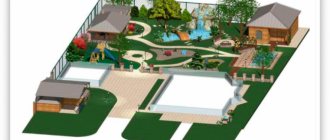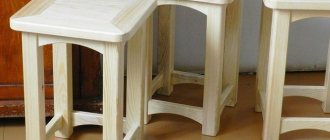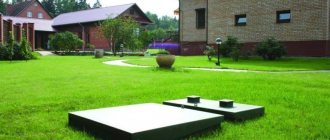Most gardeners and gardeners are accustomed to perceiving a dacha as a field for active physical activity, where they need to dig beds, harvest crops, and care for planted crops from morning to night. Currently, lovers of countryside pastimes are more inclined to believe that a house in nature is a break from the bustle of the city, enjoying the scenery, clean air and complete harmony of the landscape ensemble with buildings for relaxation.
A cozy terrace is one of these structures. It is particularly popular and provides conditions for a comfortable stay at the dacha, communicating with friends and family, sitting comfortably at the terrace table. Below we will discuss the methods of its construction and design. We will teach you how to build a terrace at your dacha with your own hands.
What is required for the extension
In order to build a modern veranda at the dacha, you will need to take into account several things that affect further work:
Project plan. It is better to start developing a construction plan at the beginning of winter - at least six months before the start of construction.
When developing a plan, you need to take into account all the little things: where the structure is located, how the door is located, on which side it is attached to the house, what the structure is made of, etc.
Location. It will not be possible to attach a closed veranda to a house just anywhere. The extension should be located so as to cover the entrance door to the house.
Territory. The veranda occupies a sufficient amount of square meters. It would be very good to take this into account when designing the house - in this case, you can immediately provide for the available dimensions of the veranda.
If the original design of the house was not designed for an extension, then you will have to use the territory that remains.
We recommend reading:
Winter greenhouse - design, arrangement and operation features, cultivated plantsVeranda at the dacha. Which interior to choose?
How to make a utility block for a dacha - a step-by-step description of how to build it yourself and instructions for arranging a utility block (115 photos)
Legalization of the project. If construction is planned on the territory of a city or other municipality, then the extension project must be submitted to the architectural department for approval of the construction plan by the state.
It is important to understand that approval of the project can take quite a long time - up to 2 months. Therefore, it is better to submit documents in winter - long before the start of the construction season.
Once everything has been taken into account, the project has been prepared and approved, construction of the extension can begin.
Layout highlights
When planning the construction of a structure, the following should be taken into account:
Location. It can be located differently depending on the functionality.
If you plan to equip an additional room on the veranda, then it may not have access to the street, but only to the inside of the house. If additional protection from wind and precipitation is needed, then it is best to place it adjacent to the front door.
Illumination. Considering the natural conditions, you can place it on the side where there is the most sunlight. This will provide an additional source of heat and light.
Soil features. You should not lose sight of this point, since the type of soil, groundwater, and freezing depth will influence the choice of foundation.
Construction area. It depends on the size of the house, you shouldn’t make it bulky or small, you need to choose the optimal size.
Financial opportunities. It is worthwhile to sensibly evaluate the material side in order to build a veranda without harming your wallet.
Preparing the area
The first stage in construction is preparing the territory. In order to begin constructing a veranda, it is necessary to clear the area of various kinds of objects, plants, shrubs and trees.
After the earth remains absolutely clean, you need to remove the fertile layer - 15 cm from the surface of the earth.
We recommend reading:
How to build a bathhouse from timber - 125 photos of the best projects and ideas on how to build a bathhouse correctlyDo-it-yourself canopy: step-by-step description of how to build a canopy correctly. The best ideas and beautiful design options (95 photos)
Beautiful canopy over the porch - installation options, design options and installation tips (95 photos)
After the fertile soil layer has been removed, it is necessary to level and mark the area. The breaking of the earth occurs by driving in metal stakes and tying twine around them.
The outer layer of the breakdown corresponds to the dimensions of the entire structure, and the inner one indicates the contour of the foundation.
Foundation of the building
The next step after preparing the area is pouring the foundation of the extension. At this stage, it is important to take into account all the characteristics of the building and make a foundation for them.
If the entire structure is large or heavy, and the soil is heaving, then there is a risk that the veranda will “move away” from the house or settle.
Also, to prevent the building from moving to the side, you need to place the veranda on a separate foundation that is not connected to the building.
There are different types of foundations: strip, columnar and others. In order to choose the appropriate type, you need to focus on the weight of the structure and the characteristics of the soil.
For example, for heavy and large verandas, a strip one is best suited, and for light or small ones - a columnar one.
We recommend reading:
How to attach a terrace to a house - step-by-step description of the construction, design options, projects and installation instructions (115 photos)Building a gazebo with your own hands - the best design ideas and main stages of construction (115 photos + video)
Construction of a chicken coop for a summer residence - how to make simple and high-quality chicken coops (105 photos + video)
Attaching the joist to the harness
They can be mounted on top of the harness, or at the same level with its top edge. You need to decide exactly how you will do this at the very beginning of the work: this will determine at what level it will be necessary to attach the support beam to the wall of the house (the height of the joists is taken into account or not). Methods for attaching floor joists are shown in the photo below.
How to attach floor joists to the frame
Materials of construction
In order to choose what to make a veranda from, you need to take into account the main building. Most often, the material for the extension is the same as that used in the construction of the house.
Although it is possible to deliberately change the material. For example, a house is made of blocks and covered with slate on top. In this case, it is not necessary to make the extension exactly the same.
You can build a veranda out of brick, and make the roof the same as that of the house. So that you have plenty to choose from in terms of appearance and construction materials, we advise you to look at photographs of the veranda attached to the house.
Roof for your veranda
Usually, I make a roof for the veranda in the shape of a slope. The shape of the roof usually does not follow the shape of the roof of the house to which this veranda is attached.
Reinforcing overhangs is best done using cornice strips. The tiles must be laid from the center of the roof in both directions.
Frame and sheathing
After pouring the foundation and selecting materials, you can begin building the subfloor.
In order to insulate the veranda, you need to fill the underground space with expanded clay, then cover the foundation with roofing felt, place foundation logs and edged boards.
When the subfloor is installed, you can build the frame.
In different versions of verandas, the frames differ from each other: in a wooden veranda there is one frame, in a stone veranda - another, in a brick one - a third. When the frame is built, you need to sheathe the extension and make a roof.
Panoramic glazing option
Currently, the most fashionable option for glazing verandas is panoramic. It provides an unrestricted view, allowing the space to transform into an outdoor terrace, enjoying the magnificent views while sitting warm in a cozy chair with a cup of tea. The strength of the structure is guaranteed by strong load-bearing profiles; thickened glass enhances the effect. Sizes and shapes can be different, which creates the possibility of implementing any design projects. Especially valuable are the great opportunities to transmit natural light, which contributes to the widespread popularity of this method.











